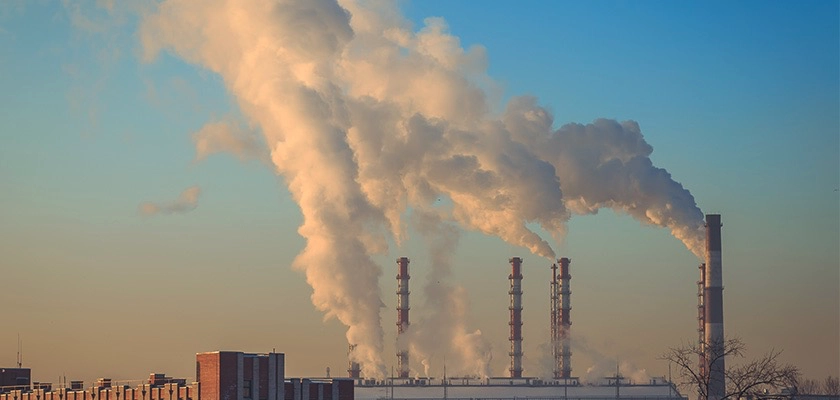Investors Get Behind New CO2 “Vacuum Cleaners” | December 2021
A technology known as direct air capture is being championed for vacuuming carbon out of the atmosphere, and investors are on board.

Technology is being championed for vacuuming carbon out of the atmosphere, and investors are on board. The technology, called direct air capture, could become the largest environmental industry with the goal of saving the planet.
Why Capture Carbon?
Capturing carbon cleans the air, helping to address the global carbon emissions crisis. Reducing emissions will likely not be enough, so many are turning to carbon capture as a way to reverse climate change. The state of California, for example, has plans to use carbon capture technology to help it achieve its goal of becoming carbon neutral.
Climeworks, based outside of Zurich, Switzerland, is one of several companies offering direct air capture. More than a dozen fans with filters work to clean the air. Once the filters are saturated, the box closes and heats to 100 degrees Celsius. These boxes remove about 900 tons of carbon dioxide per year which is “cleaned” and buried underground or sold for other uses such as making airplane fuel, plastics, and carbonation for drinks. For perspective, about 40 billion tons are emitted globally.
A Growing Market Attracts Investors
While the amount of air being cleaned may sound small, it will grow as more companies and governments enter the industry. Another example is Canada’s Carbon Engineering, a company that makes a mechanical tree-like removed CO2 from the air. The gas is sequestered or sold for re-use. Venture capital-backed carbon capture startups are on the rise.
The carbon capture market has become a trillion-dollar market, and investors are lining up for a piece of the pie. Climeworks has raised more than $100 million from companies such as Microsoft and Shopify and is working on a larger plant in Iceland. This behavior suggests investors see a long-term return on the technology. Even oil producers Exxon and Chevron have invested in carbon capture. Rio Tinto, a metal and mining corporation, has invested $4 million in a similar company called CarbonCapture.
At one time, the technology was too cost-prohibitive to be widely adopted. Now, prices have declined and will continue to decline as the industry scales.
In the Classroom
This article can be used to discuss social responsibility (Chapter 2: Business Ethics and Social Responsibility), venture capital (Chapter 5: Small Business, Entrepreneurship, and Franchising), and financing (Chapter 16: Financial Management and Securities Markets).
Discussion Questions
- Explain the carbon capture process.
- Why is carbon capture useful technology?
- Why do you think venture capital-backed carbon capture startups are growing so rapidly?
This article was developed with the support of Kelsey Reddick for and under the direction of O.C. Ferrell, Linda Ferrell, and Geoff Hirt.
Sources
Corbin Hiar, "Rio Tinto Invests in Mining Carbon Dioxide from the Air," E&E News, October 19, 2021, https://www.eenews.net/articles/rio-tinto-invests-in-mining-carbon-dioxide-from-the-air/
Diana Olick, "These Companies Are Sucking Carbon Out of the Atmosphere — And Investors Are Piling In," CNBC, July 23, 2021, https://www.cnbc.com/2021/07/23/these-companies-are-sucking-carbon-from-the-atmosphere.html
Elizabeth Stamp, "How This CO2 'Vacuum Cleaner' Is Fighting Climate Change," Architectural Digest, April 27, 2021, https://www.architecturaldigest.com/story/co2-vacuum-cleaner-fighting-climate-change



